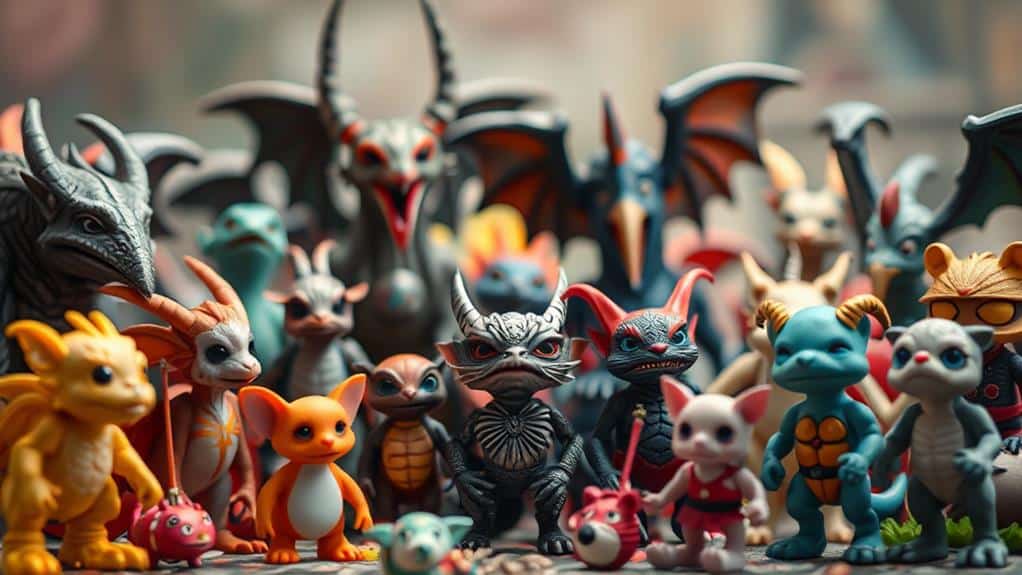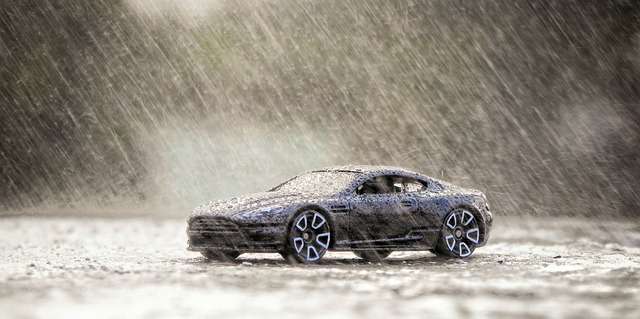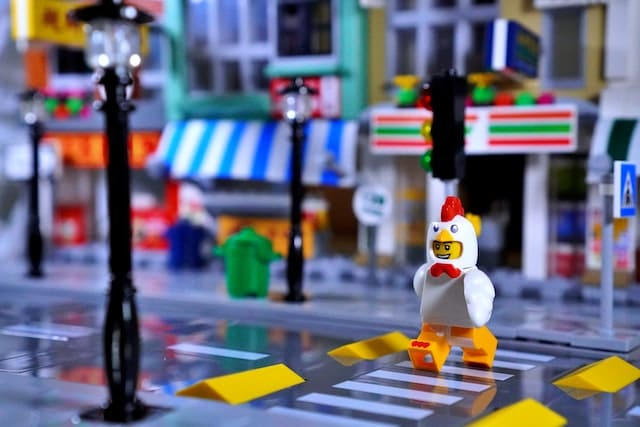Exploring unique perspectives in figurine photography opens doors to creativity and storytelling. You can transform tiny subjects into vivid, lifelike scenes by playing with angles, lighting, and shadows. Experiment with diverse elements to create depth and realism, such as using props and adjusting camera settings. Forced perspective can alter how viewers perceive size and distance, adding layers to your narrative. Highlighting textures and details with macro lenses and soft lighting brings figurines to life, making images feel immersive and engaging. Embracing these techniques invites you to discover a world where imagination and technical skill meet seamlessly, offering much more.
Enhancing Depth Perception
When you're capturing figurine photographs, enhancing depth perception can transform your images from flat snapshots to dynamic works of art. To achieve this, try experimenting with different angles. Instead of shooting directly from the front, position yourself slightly to the side or above the figurine. This shift can create a sense of three-dimensionality, making the figure pop against its background.
Lighting plays an essential role as well. Use shadows to your advantage by adjusting the direction and intensity of your light source. Harsh shadows can add boldness, while softer lighting can create a gentle gradient that enhances depth. Natural light, especially during the golden hour, can add warmth and depth without overwhelming details.
Incorporating foreground elements can also be a game-changer. Place objects like foliage or miniature props in front of the figurine. This technique draws the viewer's eye through the scene, creating layers that suggest space and distance. Additionally, adjusting your aperture setting to a lower number can blur the background, further emphasizing the figurine. Remember, the key is to guide the viewer's eye and craft a scene that feels alive with dimension and interest.
Creating Realistic Scenes
To create realistic scenes in figurine photography, focus on building a believable environment around your subject. Start by considering the setting that complements the figurine's character or story. If you're photographing an action figure from a sci-fi series, create a backdrop that mimics a futuristic city or alien landscape. Gather materials like miniature props, textured papers, or small-scale dioramas to enhance authenticity.
Pay attention to scale and proportion. Your goal is to make the viewer believe the figurine exists in a life-sized world. Use objects that match the figurine's size, ensuring they don't overshadow or dwarf it. For example, small rocks or twigs can become boulders or trees, while fabric scraps might mimic flowing grass or water.
Consider the angle and perspective. Shoot at eye level with the figurine to give the illusion they're part of a larger world. This approach helps immerse the viewer into the scene, making it feel more genuine. Experiment with different camera positions to find the most convincing composition.
Playing With Light and Shadows
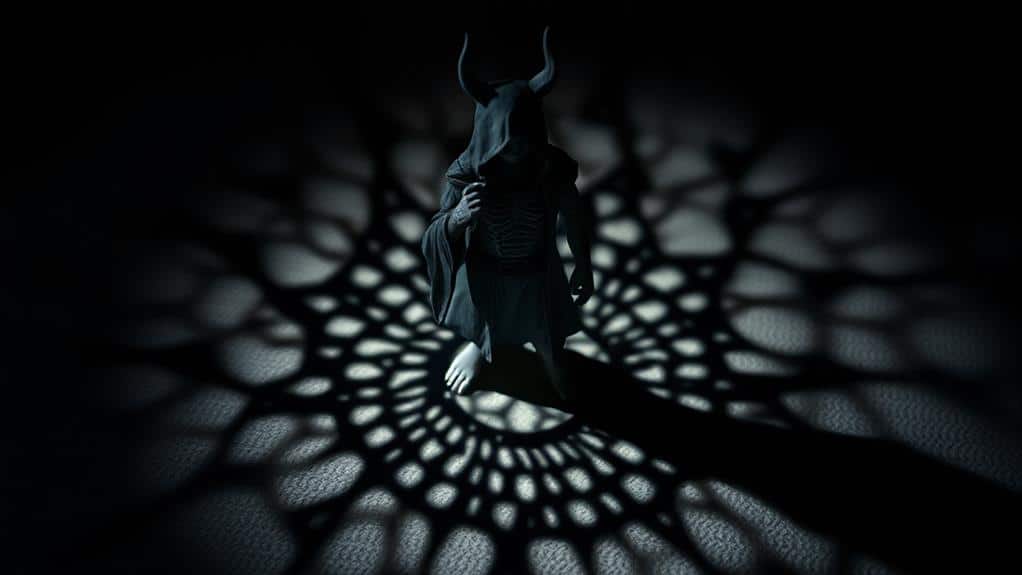
Lighting is essential in figurine photography, transforming a static scene into a dynamic story. When you play with light and shadows, you add depth, mood, and emotion to your images, making them more engaging and lifelike. Start by experimenting with different light sources, such as natural sunlight, lamps, or LED lights. Each source casts unique shadows and highlights, allowing you to control the atmosphere of your scene.
Position your light source to create interesting shadow patterns. Shadows can emphasize details and textures on your figurines, bringing out features that might otherwise go unnoticed. Try placing the light at different angles to see how it affects the mood. Side lighting can create dramatic effects, while front lighting highlights details evenly.
Don't forget about the background. Shadows cast on backgrounds can add layers and context, making your scene feel more immersive. Use colored gels or filters on your lights to change the tone and feel of the image. Experimentation is key, so don't be afraid to try unconventional angles or lighting setups. By creatively playing with light and shadows, you'll elevate your figurine photography to an art form, capturing unique perspectives and stories.
Utilizing Forced Perspective
Exploring different lighting techniques can set the stage for another creative approach in figurine photography—utilizing forced perspective. This technique allows you to manipulate the perceived size and distance of your figurines, creating intriguing and sometimes surreal images. By positioning your camera and subjects strategically, you can make a small figurine appear towering or a larger object seem minuscule. It's all about playing with depth and angles.
Start by experimenting with distance. Place your figurine close to the camera while keeping larger objects in the background, like a building or a tree, to shrink them in relation. Conversely, you can position the figurine farther back to make it look tiny against a nearby object. Adjust the focus and aperture settings to enhance the effect, drawing attention to the desired elements.
Angles are just as important. Tilting your camera or shooting from a low or high vantage point can dramatically change how the figurine interacts with its surroundings. Don't be afraid to think outside the box and try unconventional setups. With practice, you'll discover how forced perspective can transform ordinary scenes into extraordinary visual narratives.
Highlighting Details and Textures
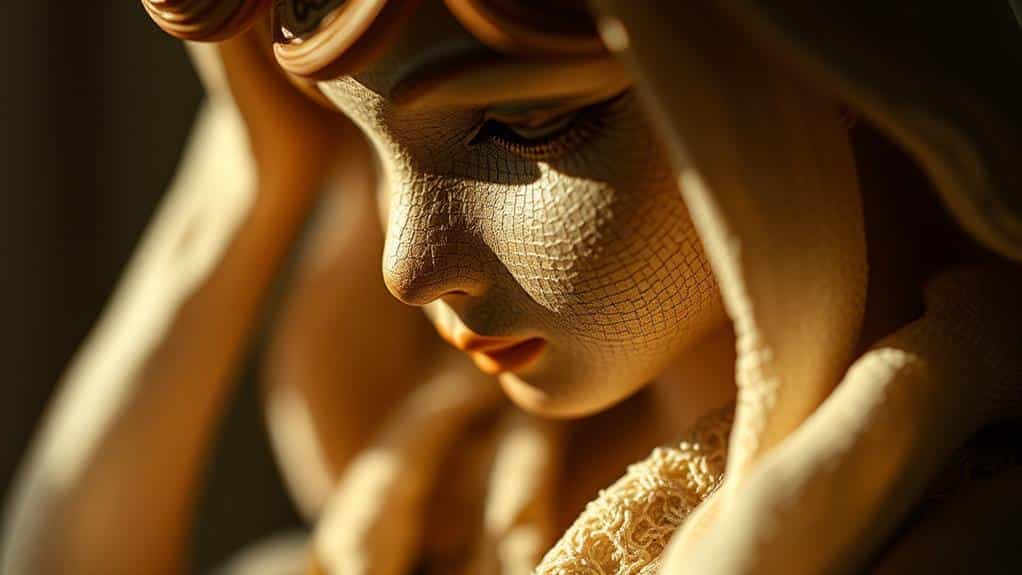
Capturing intricate details and textures in figurine photography can elevate your images from simple snapshots to enchanting art. When you focus on the fine lines, unique textures, and subtle nuances of your figurines, you create a sense of realism that draws viewers in. To achieve this, pay attention to lighting and angles. Soft lighting can reveal textures without harsh shadows, while different angles can emphasize specific details, giving your photo depth and dimension.
Consider these tips to highlight details and textures effectively:
| Tip | Description |
|---|---|
| Use Macro Lenses | Get close to capture fine details. |
| Experiment with Lighting | Soft light enhances textures beautifully. |
| Adjust Your Camera Settings | A higher aperture for increased depth of field. |
| Utilize Reflectors | Bounce light to highlight areas of interest. |
| Post-Processing Techniques | Enhance textures and fine details. |
Frequently Asked Questions
What Equipment Is Essential for Starting Out in Figurine Photography?
To start in figurine photography, you'll need a camera, preferably with manual settings, and a macro lens for close-ups. A tripod guarantees stability, while good lighting, like a softbox or LED lights, enhances your shots.
How Do I Choose the Best Background for My Figurine Photos?
Choose a background that complements your figurine's colors and theme. Use textured papers, natural settings, or digital backdrops. Make certain it doesn't distract from the subject. Experiment with lighting and angles for the best effect.
What Post-Processing Techniques Enhance Figurine Photography?
Channel your inner Renaissance artist and adjust brightness, contrast, and saturation to make figurines pop. Use sharpening for details and vignettes for focus. Don't forget dodging and burning to create depth and enhance storytelling in your shots.
How Can I Make My Figurine Photos Stand Out on Social Media?
Use unique angles, vibrant lighting, and creative backgrounds to make your figurine photos pop. Experiment with storytelling and post-editing techniques like color grading. Engage viewers by sharing behind-the-scenes content and encouraging interaction through captions or hashtags.
What Are the Common Mistakes to Avoid in Figurine Photography?
You're ready to capture the perfect shot, but beware! Avoid harsh lighting that casts unforgiving shadows, cluttered backgrounds that distract, and neglecting focus, which makes your figurines blurry. Master these, and your photos will shine.
At a Glance
In figurine photography, exploring unique perspectives invites you to peek through a different lens. You'll discover how to enhance depth perception, breathe life into scenes, and dance with light and shadows. By utilizing forced perspective, you can create illusions that delight the eye. As you highlight details and textures, the figurines whisper their secrets, revealing stories untold. Embrace this artistic journey, and you'll find that the ordinary transforms into something delightfully unexpected.

